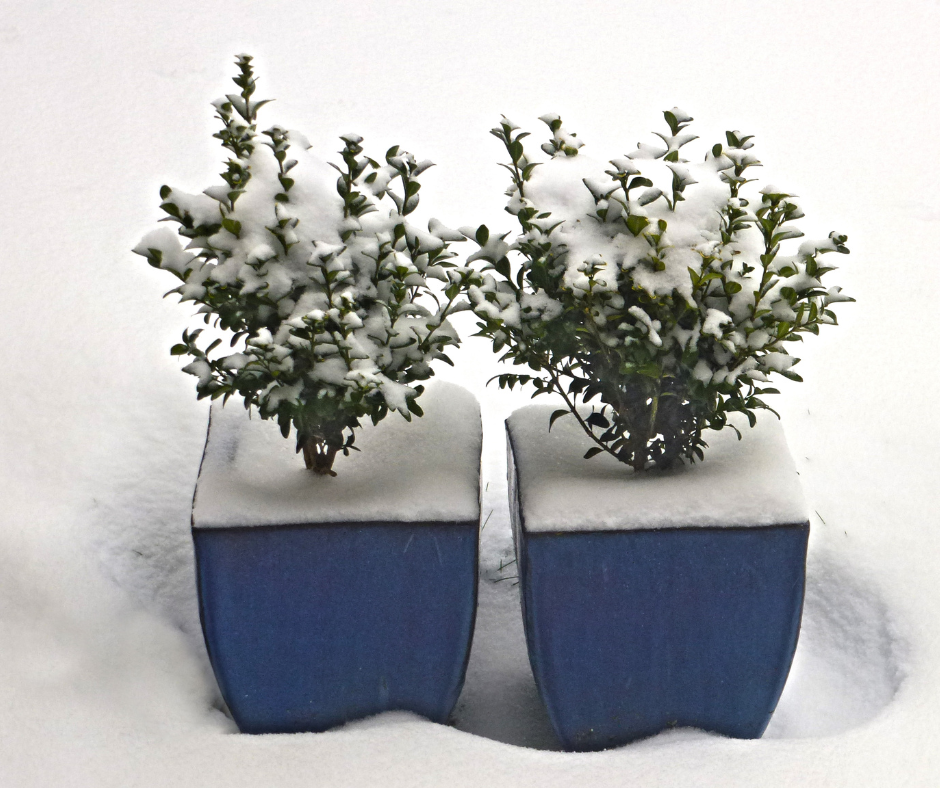
Winter can be a difficult time for your landscaping. The cold temperatures can leave your plants, grass, and trees damaged or even dead.
Damage to plants and trees during winter
Winter can cause damage to any vegetation in your yard, especially if it is not adequately protected from cold temperatures. Perennials, shrubs, small trees, evergreens, and groundcovers may need extra protection or mulch around their root systems to survive the extreme temperatures. Additionally, during the winter, it is essential to watch for signs of diseases and pests that may have been dormant in warmer weather. Remove any dead or decaying branches to keep your plants healthy. Protecting outdoor furniture from the elements is also essential for its longevity. Cover outdoor furniture with a tarp or move it indoors if possible. Check regularly for any leaks or damage to the furniture’s protective covering. Lastly, it is essential to keep pathways and sidewalks clear of debris and ice so people can move safely throughout your yard.
Dead grass in the winter
When the temperature drops and snow falls, it can cause your grass to become dormant, which means it will not have any activity or growth until the spring months. This may lead to patches of dead grass on your lawn that could be more appealing. To help keep your grass healthy, you should apply winter lawn care techniques to ensure nutrients are provided and the soil remains hydrated. One crucial step is to rake up leaves from your lawn before they get covered with snow. Doing so will allow light and air to circulate the grass blades, allowing them to remain healthy during winter. You should also aerate your lawn periodically throughout the winter, which helps to break up compacted soil and promote healthy root growth. Finally, be sure to fertilize your grass in late autumn or early winter with an appropriate fertilizer for that time of year. This will give it a boost of nutrients and help it to stay green during the coldest months.
Frozen ponds and rivers in the winter
Water is an essential element for your landscape, and during the winter months, it can become frozen if not taken care of properly. If left untreated, ponds and rivers on your property may freeze over and put aquatic life in danger. Preparing your water features for the cold weather is essential to avoid this.
To do this, add a deicer or bubbler to your pond or river. This will ensure oxygen levels are consistent and prevent ice formation. Also, add a floating heater or pond heater to your water feature to maintain a warmer temperature throughout the winter.
If you have an outdoor fountain, it is essential to ensure that all the pipes are correctly insulated and cleared of debris before the cold weather hits. It would be best if you also considered draining any stagnant water from the fountain and storing it in a safe place.
Snow mold in the winter
Snow mold is a fungal disease that can affect your lawn and landscaping if treated incorrectly. It will start to appear in the form of white patches on the grass that is very difficult to remove. Cold temperatures, wet soil, and inadequate drainage cause the disease. If left untreated, snow mold can cause significant damage to your lawn.
The best way to prevent snow mold is to ensure that your lawn is well-maintained throughout the winter. Ensure you regularly rake leaves and other debris off the property and keep it aerated. If your lawn is prone to snow mold, consider applying a fungicide in the early fall before temperatures drop. This will help protect against snow mold for the rest of the season.
If you do find signs of snow mold on your lawn, it’s essential to act quickly. Start by raking away the affected areas and applying a fungicide designed for snow mold. You may also need to provide extra nutrients and aeration to help your lawn recover from the disease. Proper care can restore your lawn to its original healthy state.
Ice and snow damage
Ice and snow can cause a lot of damage to your landscape if it isn’t taken care of properly. Heavy ice build-up on trees, shrubs, and other plants can cause branches to break or snap off. Snow accumulation can also be hazardous for plants as it will block sunlight and air circulation and cause mold and rot. Removing snow and ice from your landscaping can help prevent any damage from occurring.
To remove the snow and ice, use a garden or push a broom to sweep away as much loose material as possible. You can then use a tarp or plastic sheet to cover plants that are delicate or particularly susceptible to ice damage. It’s also important to remove snow from trees and shrubs as soon as possible to prevent the breaking or snapping of branches due to the weight of the snow/ice.
How does the Perimeter Landscape help protect your property from the cold weather?
At Perimeter Landscape, we offer various services to help you protect your yard and landscaping during the winter months. We can help you with snow and ice removal, provide plant protection, install insulation where necessary, and even clear away large patches of dead grass. Additionally, we have experience installing irrigation systems to ensure your plants stay hydrated throughout the season. As part of our winterization services, we also check the health and condition of your lawn equipment to ensure everything is running smoothly. We can even provide routine maintenance to keep everything in top shape. With Perimeter Landscape, you can be sure that your yard will remain beautiful and healthy throughout the coldest months.
No matter what type of winter landscape services you need, we can help. Contact us today to discuss how Perimeter Landscape can help protect your yard and landscaping this winter! We look forward to hearing from you!


